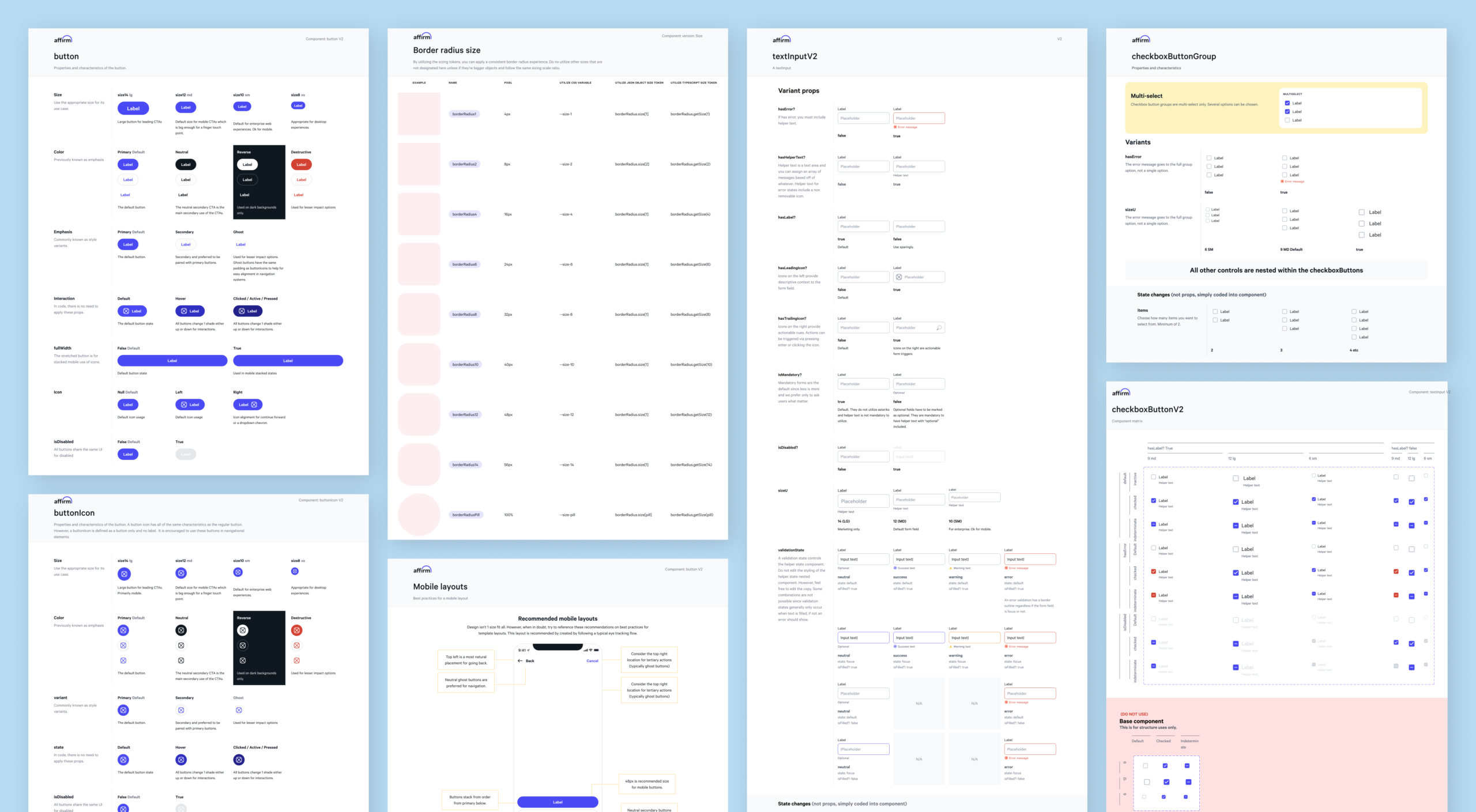Project overview
Like many fast-growing companies, Affirm ended up with a lot of custom, one-off code built in silos across different teams. By 2019, they had created a design system to bring order to the chaos—but it needed serious help. I was brought in to help improve their Figma library and support the system’s next evolution.
The problem
The first version of the design system (V1) was rough. The Figma components were inconsistent, the code was outdated, and worst of all, neither really worked well—especially for mobile. Everything felt patched together, with mismatched properties and neglected documentation.
On top of that, there were some serious roadblocks:
- The V1 components weren’t usable, but we weren’t allowed to make breaking changes.
- Engineering resources were limited, and leadership was hesitant to dedicate more time.
- Fixes or improvements would require rewriting things that teams were already using.
It was the classic design system paradox—everyone wanted consistency, but no one wanted to slow down to fix the foundation.
Process
To make progress, we got strategic. We built two versions of the Figma library:
-
A V1 version that mirrored the existing (flawed) components.
-
A V2 “Northstar” version that showed what the system could be—clean, consistent, scalable, and mobile-friendly.
Every Northstar component was carefully built: internally audited, benchmarked against industry standards, reviewed with designers, and documented in a JSON-ready format for easy implementation.
But design work alone wasn’t enough—we needed buy-in. So we put the two systems to the test. We ran internal user tests, showing designers the V1 vs. V2 components side by side and gathered their feedback.

Results
The results were loud and clear: 85% designers preferred the new version.*
Everyone agreed that V1 felt like a step backwards, while V2 felt intuitive and modern. With this data in hand, we presented our findings to leadership—highlighting just how broken V1 was and how V2 could improve velocity, consistency, and quality.
That was the turning point. We got the resources we needed, gained momentum, and moved forward with a “better than yesterday” mindset—building a design system the right way, one component at a time.
* 1 designer who was surveyed was junior, new to Figma, and neutral in her response.
“
Patty has been an absolute pleasure to work with. She proactively tackled the challenges we faced in improving Affirm’s Design System. She displayed a high degree of professionalism and was always full of positive energy. The final results she produced were remarkable.







